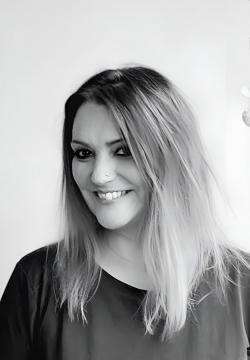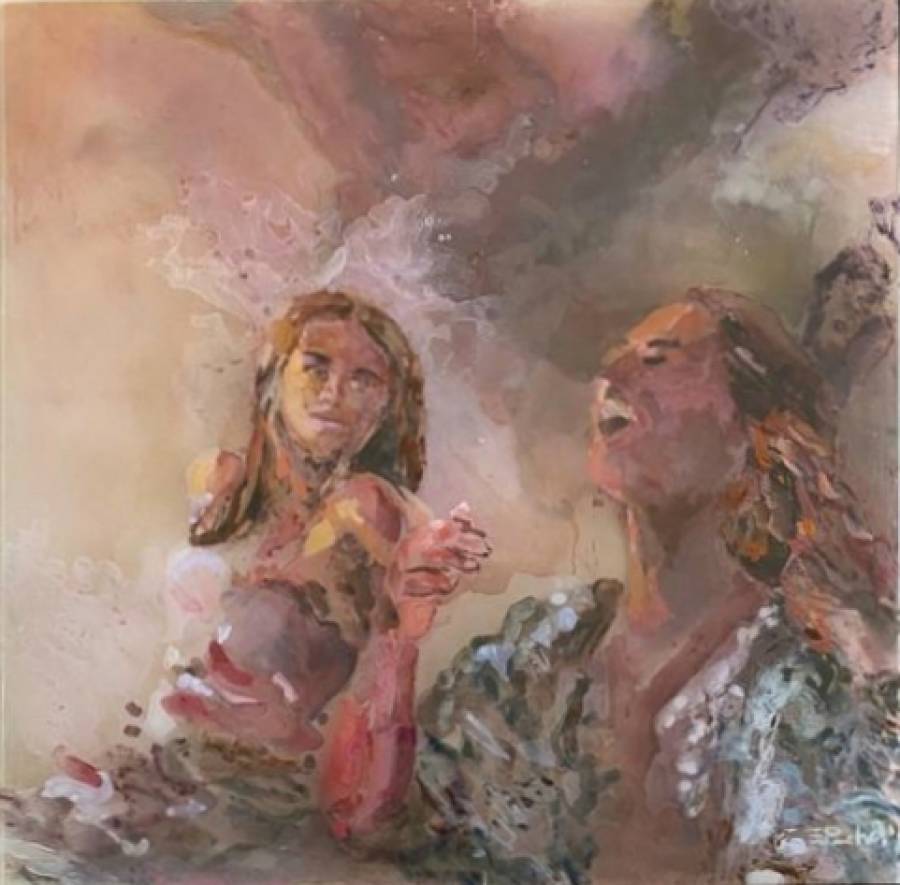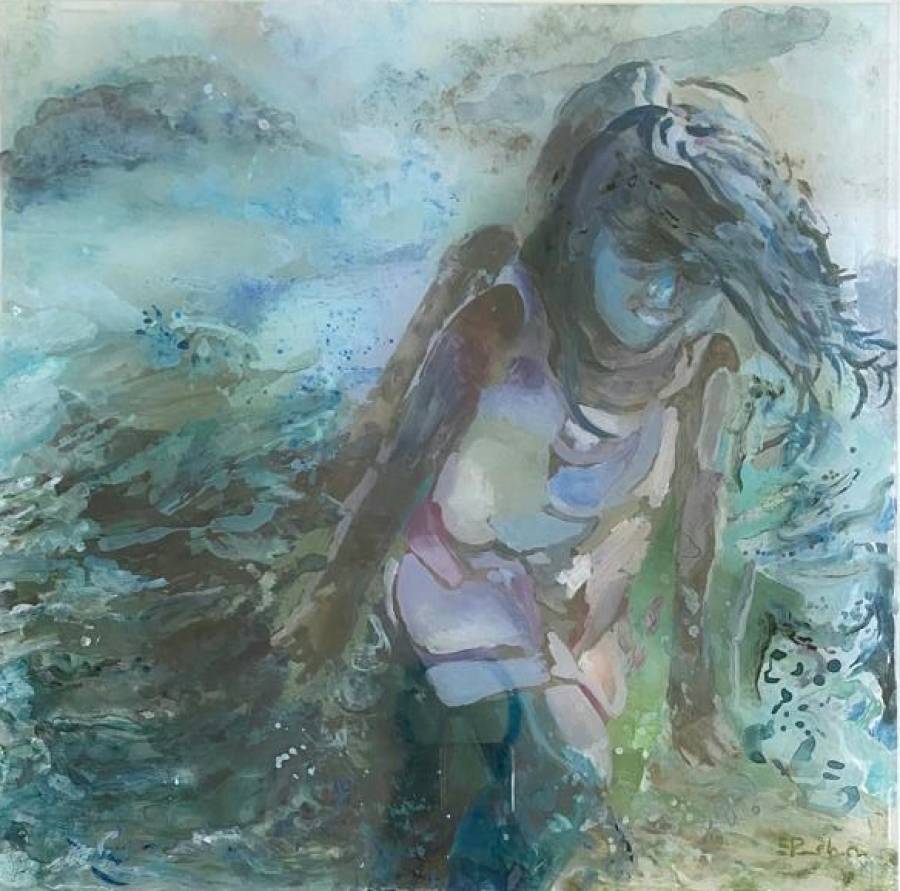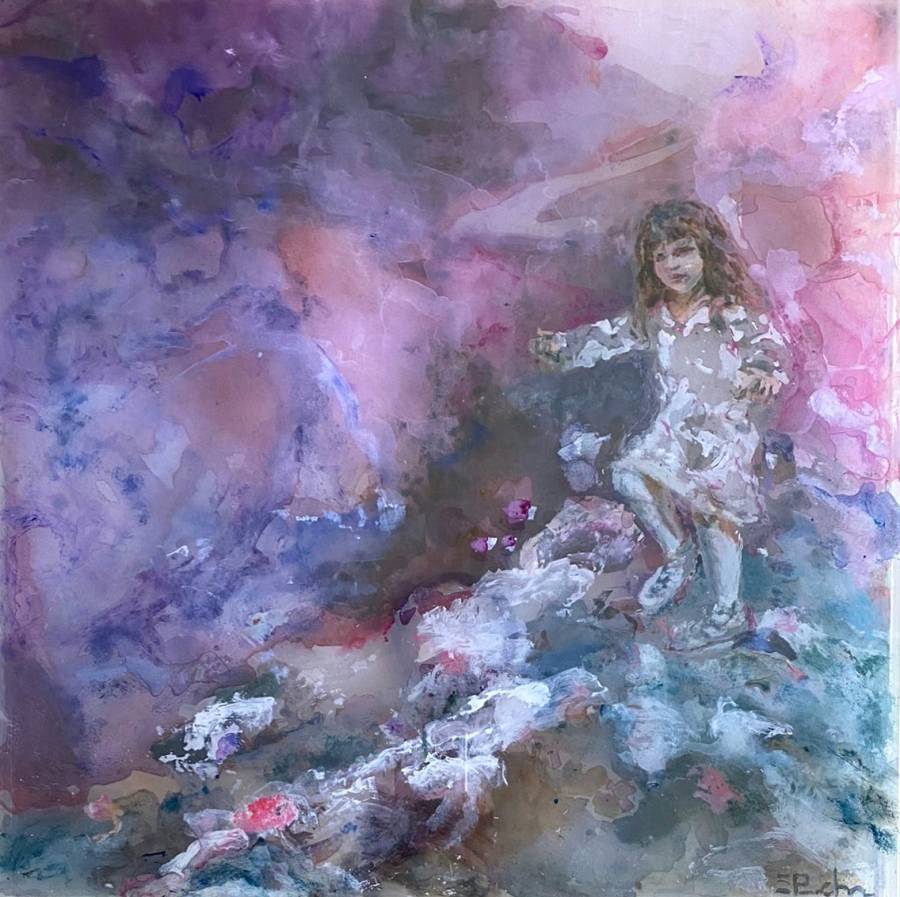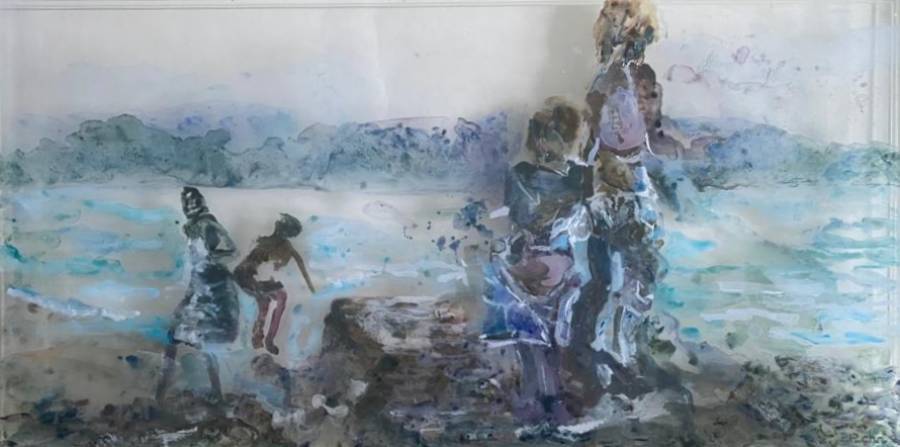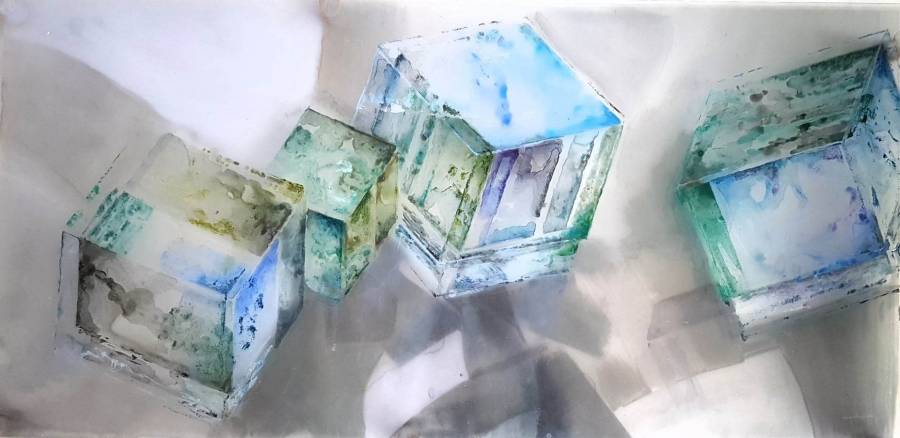Coming from a family of artists, Evelyne Puech practiced the reverse glass painting technique with her mother from the age of six. She naturally committed to the School of Decorative Arts' path in Geneva, then obtained a diploma of Artistic Maturity in the Visual Arts section to finish with the University of Geneva in the field of psychology and psychotherapy at the IRAT Institute in Lyon.
Evelyne Puech is driven by the need to build and express a universe in which she highlights a form of beauty and poetry and to share it. This choice of technique and material has always been the basis of the plastic and aesthetic research of the artist, particularly for reasons of transparency, superimpositions and inversions. The reference artists who inspire her artistic universe are figures of lyrical, mystical or figurative abstraction such as Chu Teh Chu, Zao Wu Ki, Zaoming Wu or even Turner, Brüggel et Bosh.
Evelyne Puech is driven by the need to build and express a universe in which she highlights a form of beauty and poetry and to share it. This choice of technique and material has always been the basis of the plastic and aesthetic research of the artist, particularly for reasons of transparency, superimpositions and inversions. The reference artists who inspire her artistic universe are figures of lyrical, mystical or figurative abstraction such as Chu Teh Chu, Zao Wu Ki, Zaoming Wu or even Turner, Brüggel et Bosh.

